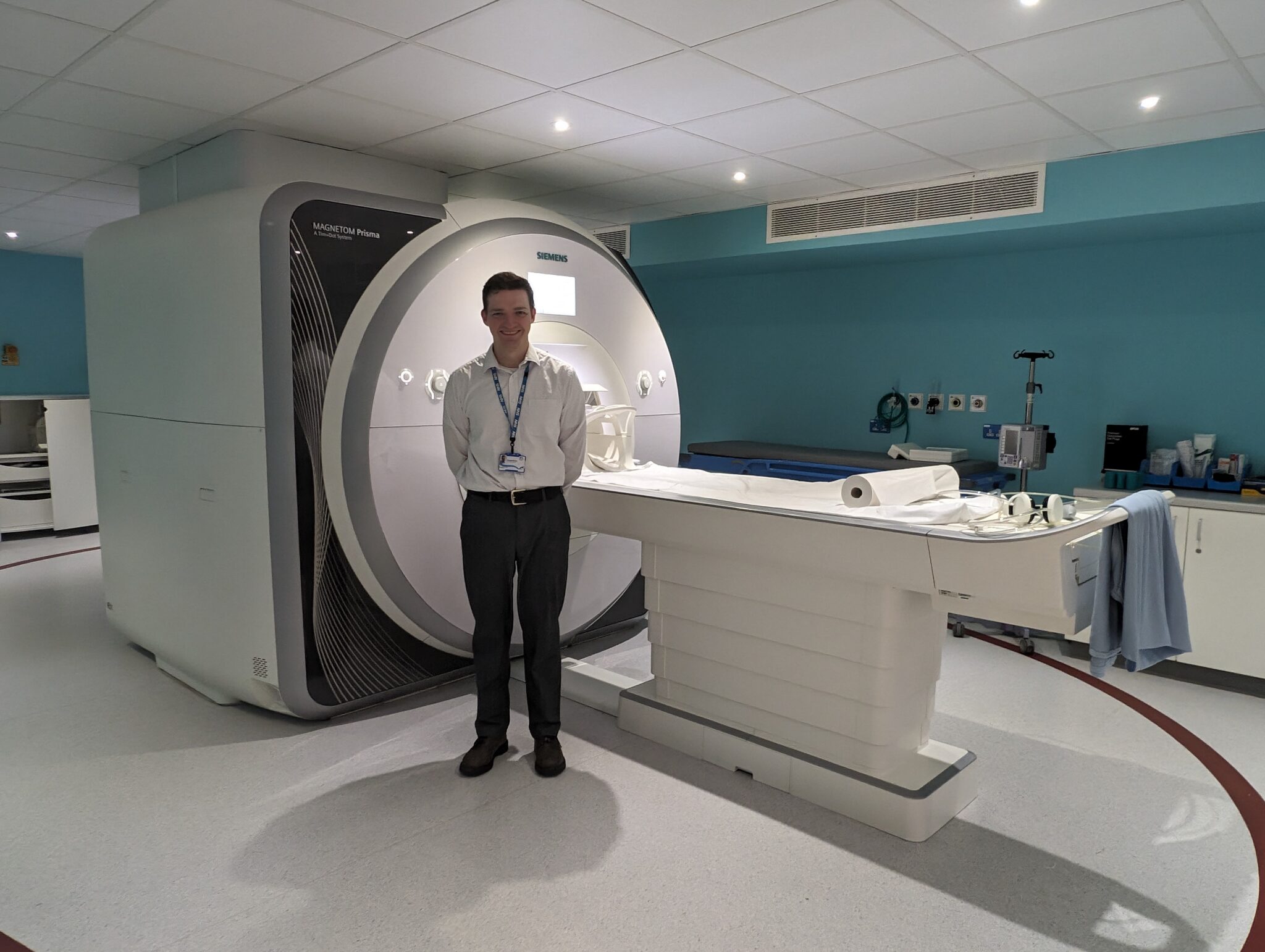
A clinical scientist at NHS Greater Glasgow and Clyde went into his chosen career after a radiographer made a life-saving diagnosis when he was a teenager.
George Bruce today works to study the science of scanning and MRI physics at the Queen Elizabeth University Hospital, in Glasgow. However 13 years ago, at the age of 15, he found himself in a “plot line from a hit TV medical drama”, according to NHS Greater Glasgow and Clyde (NHSGGC).
As a teenager, Mr. Bruce was taken to hospital in excruciating abdominal pain, but medical teams were unable to find out what was wrong even as constant medical tests were performed.
It was only a “quick-thinking… sharp-eyed” consultant radiographer who was able to detect Mr. Bruce’s Meckel’s Diverticulum during an ultrasound and help save his life.
A rare find
Meckel’s Diverticulum with intussuception is an abnormality of the small intestine, which can look like a second appendix. A small pocket forms in the intestine – a very rare, but usually harmless, occurrence.
In Mr. Bruce’s case, the pocket “flared up”, causing stomach pain and illness.
Mr. Bruce said: “One evening I had a terrible pain in my stomach and my mum and dad rushed me to A&E. They took blood and I was given X-ray, CT and MRI scans, but nobody knew what it was.
“They repeatedly asked if I’d taken drugs or had swallowed anything sharp, even asking if my parents had been abusive. They made notes of how often my parents visited or enquired about my condition.”
He spent two weeks in hospital severely ill, and his parents were told to prepare for the worst.
One in 125,000 chance
However a consultant radiographer asked for an ultrasound, and spotted the unusual disease. Mr. Bruce was able to undergo life-saving surgery and recover completely.
Just 2 per cent of the population have one of the pockets that caused Mr. Bruce’s ill health. Of those, just 2 per cent will develop complications, most commonly before two years of age. Of those with complications, just 2 per cent of symptomatic cases occur in people of his age.
That makes his case a one-in-125,000 chance, or just eight in every million people.
'It's complicated and convoluted... I love it'
Despite an initial interested in becoming a doctor, Mr. Bruce realised he was more interested in science after his incident.
He said: “During my A-levels my teacher highlighted medical physics as a career, and because of the diagnosis process that helped me, I became interested in doing physics at university – in fact, that interest became dogged determination after my teacher told me I wouldn’t be able to do it.”
In his third year at university, Mr. Bruce attended a talk on MRI physics, propelling him towards clinical science.
“I became fascinated by the challenges of getting images from inside a body,” he explained.
“You see, X-ray is relatively easy to understand – you’re effectively ‘shining a torch’ into someone to see what you can see.
“Then there’s CT, which is more complicated. It involves taking multiple X-rays around the body, producing more detailed information about the inside of the body. There are a variety of other imaging techniques clinical scientists are involved in, such as ultrasound and nuclear medicine, but my chosen specialism was MRI.”
“It’s complicated and convoluted – basically I feel as though I’ve landed at the most confusing end of the scanning story, and I love it,” he added.
'Brilliant, interesting, confusing'
Mr. Bruce has been a clinical scientist for five years now, and he said it would be difficult to describe a “typical day” as an MRI physicist.
He said: “Our day-to-day varies a great deal based on clinical need, planned developments, teaching and MRI safety concerns. It’s great to have a job that offers such variety.”
Since taking up his position, George has developed an equal passion for inspiring others to choose a career in health care science. He’s worked as a STEM ambassador, going into schools and colleges and telling others about his role.
He added: “I really enjoy telling the story of what I do. I want to show a young person like me, who’s not sure where their interest in science will take them, tåhat there are brilliant, interesting, confusing careers out there.”
(Image: George Bruce with MRI scanner, via NHSGGC)
